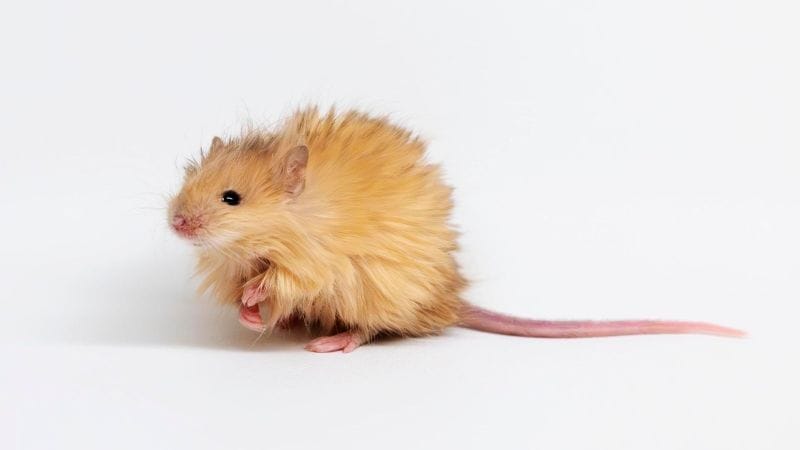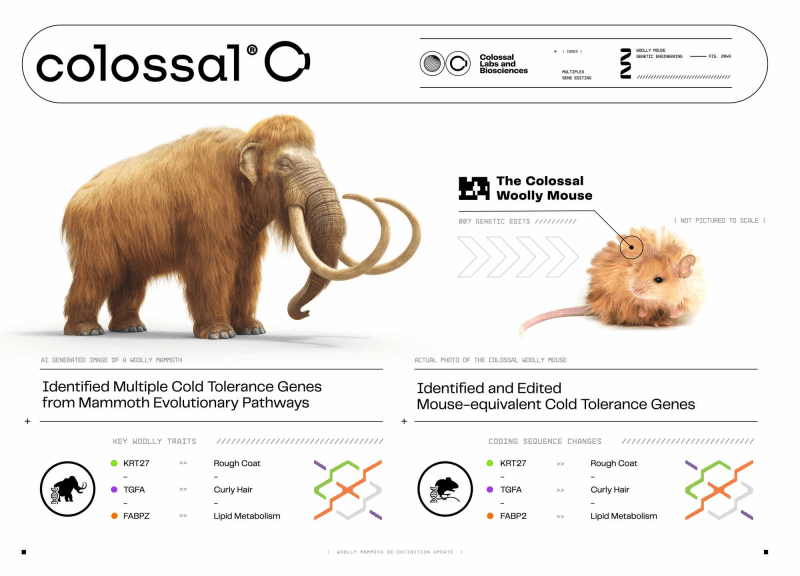The Woolly Mammoth’s Return: A Giant Step for De-Extinction
For years, the idea of resurrecting the woolly mammoth has felt more like sci-fi than science. But Colossal Biosciences, the company leading the charge in de-extinction, just took a major step toward making it a reality—using an unlikely helper: a mouse.
We’ve covered Colossal’s mammoth-sized ambitions before, from their early genetic breakthroughs to their vision of reintroducing these Ice Age giants to the Arctic. Now, their latest milestone brings them one step closer—by successfully engineering a living mammal with mammoth-like fur.

Photo via Colossal Bioscience.
A Mouse in Mammoth’s Clothing?
The first real proof of concept for mammoth revival has come in a tiny, unassuming package—a mouse. Scientists at Colossal spliced genes from the woolly mammoth into a living mouse, giving it fur with the same characteristics as the prehistoric giant’s thick, insulating coat.
Why start with a mouse? Because it’s a small, fast-reproducing species that allows scientists to test mammoth traits in a living animal without waiting years for results. The successful transfer of mammoth DNA into a living mammal is a critical first step toward eventually applying these same techniques to elephants, the mammoth’s closest living relatives.

A graphic showcasing some of the genes altered to create the Colossal Woolly Mouse
Shapiro and her colleagues started by trying to identify the genes responsible for making mammoths distinctive.
They compared ancient samples of genetic material from mammoths with genetic sequences of African and Asian elephants, the mammoth’s closest living relative.
These included long, woolly hair and a way of metabolizing fat that helped the animals survive well in the cold.
“And then we look in the mouse for those same genes and instances where those genes have been involved with making a woolly coat, or longer hair, or changing the color of the hair,” Shapiro says.

Photo via Colossal Bioscience.
From Lab to Tundra: What’s Next?
Colossal’s long-term vision isn’t just about bringing back an extinct species for spectacle—it’s about restoring the Arctic ecosystem. Woolly mammoths once played a key role in preventing permafrost from melting, helping maintain the frozen grasslands of the Ice Age. Scientists believe that reintroducing mammoth-like elephants could help combat climate change by trampling snow, fertilizing soil, and promoting plant growth in ways modern elephants do in their own habitats.
With this latest success, Colossal is now one step closer to creating a true mammoth-elephant hybrid, using genetically edited elephant embryos to develop a species that could survive in Arctic conditions. The goal? A living, breathing mammoth-like creature by the 2030s.

Photo via Colossal Bioscience.
The Ethics and Impact of De-Extinction
Not everyone agrees on whether de-extinction is the right path forward. Some argue that efforts should focus on saving endangered species rather than bringing back long-gone ones. Others see this as an essential step in reversing human-driven extinctions and restoring ecological balance.
Regardless of where you stand, one thing is clear: we are entering an era where extinct species may no longer be gone forever. If this research continues to succeed, the Arctic could one day see herds of woolly giants once again, reshaping the land just as they did thousands of years ago.

Photo via Colossal Bioscience.

Images © Copyright Colossal Biosciences.
The post A Mouse in Mammoth’s Clothing? Meet the Woolly Mouse. appeared first on Moss and Fog.
